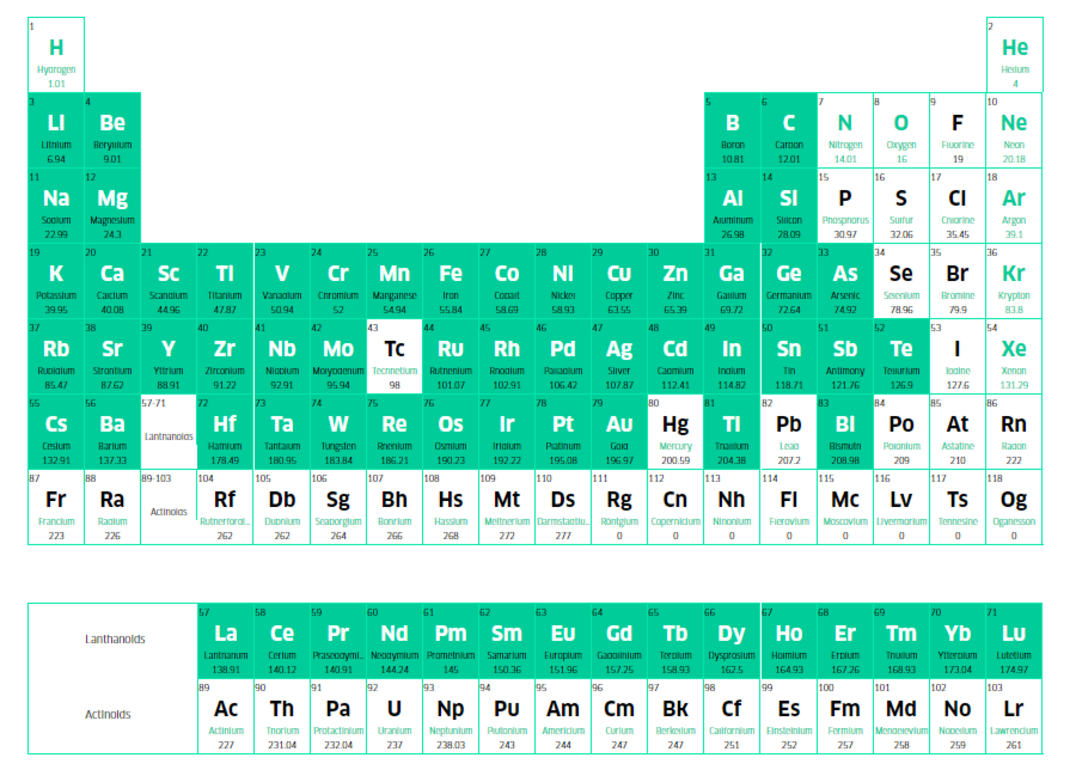The Future of the Periodic Table
One Hundred and Fifty Years on, the Table Continues to Grow and Inspire, but the Real Opportunities Will Be Found at the nanoscale
Science Blog
By Maurits Boeije, Materials Scientist for VSPARTICLE
The ‘Father of the Periodic Table of Elements,’ the Russian chemist and inventor, Dmitri Mendeleev, produced his indispensable table 150 years ago. He was not the first to attempt to make order of the chemical elements known at the time, but by comparing the atomic mass of each of the elements, he was able to find a new order.
The strength of this approach is reflected in the fact that elements located close to each other, share chemical properties. First published in a Russian-language journal, this table was even able to predict the existence of new elements.
One of the most recent examples of filled gaps using the table was the discovery of (radioactive) technetium in 1937. Mendeleev called this eka-manganese, and situated it below manganese in his table.

The Periodic Table of Elements is still growing. In 2016 four new (unstable) elements were added. So what can we expect next? Some scientists suggest that beyond the unstable elements, there are new elements that form an island of stability that can open up new opportunities1. These elements will have new properties that we can use, although they will never be abundantly available.
In fact, we don’t need new elements; we need materials with new properties.
One of the ways to produce new properties is by mixing two or more elements. While there are now 118 elements to choose from, about 80 are nonradioactive and readily available to society. Mixing metals (alloying) is normally used to produce new properties and is frequently used in the steel industry. The combinations are endless (since you can vary the composition and concentration) and can, for instance, increase the strength of steels.
Another way to do it is to “nanostructure” materials, which means to break materials down to clusters of atoms with nanometer size. This doesn’t only produce new properties, the procedure can also be used to mimicthe properties of another element. This has interested many people in history. For instance, Sir Isaac Newton invested much of his time in alchemy to produce a material with gold-like properties2. Nowadays, this claim is still being used to popularize scientific literature3.
Combining these two techniques: alloying and nanostructuring, will produce better and cheaper materials and will truly be able to drive technological progress4. However, do we understand why? Like in the periodic table, the properties can be rationalized by looking at the electrons inside those materials. They give the materials their optical, electrical, magnetic and chemical properties. By alloying, the electrons are mixed and thus, the properties can also be mixed.
What nanostructuring does, is add quantum effects into the mix. While in bulk metals, the electrons can move freely through the material due to free energy states, the electrons in individual atoms are bound to their fixed energy states. By adding more atoms, new energy states are introduced and new properties emerge that are not found in either atoms or bulk materials.
So to conclude, scientists now have more degrees of freedom than ever to make new materials. They can mix various elements and particle sizes to make newer and better materials that make our modern way of living possible. In effect, this is the legacy of Mandeleev’s great work and the future.

Comments
No Comments